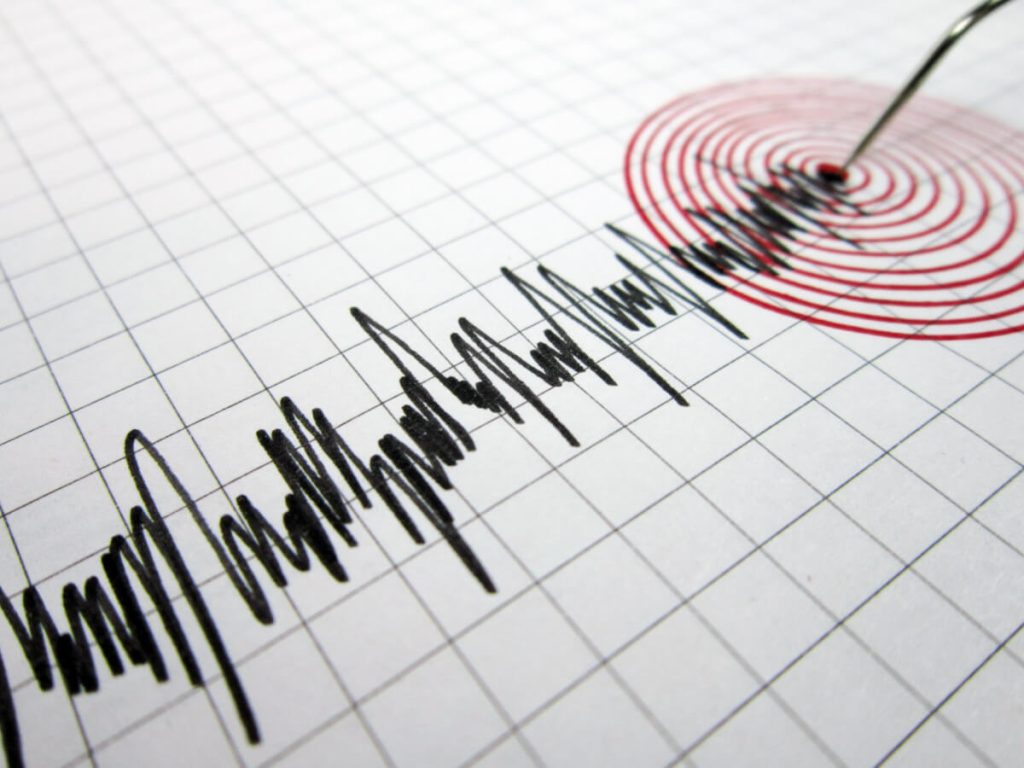

(Photo by menur on Shutterstock)
In a nutshell
- Scientists have solved the mystery of how earthquakes can occur 420 miles deep inside Earth, where extreme pressure and heat should make rock flow rather than break. The key is a mineral called olivine that transforms under pressure, creating conditions for earthquakes at impossible depths.
- Previous claims of an even deeper “record-breaking” earthquake at 466 miles depth have been debunked through careful analysis of seismic data from Japan’s advanced earthquake detection network.
- The findings reveal that the zone where these deep earthquakes occur is surprisingly thin – only 7.5 miles wide – suggesting this region of Earth’s mantle is being heated more thoroughly than similar zones elsewhere due to slower subduction of crustal plates.
LOS ANGELES — For decades, geophysicists believed they understood the limits of where earthquakes could occur in Earth’s interior. Then in May of 2015, a magnitude 7.9 earthquake struck at an astonishing depth of 420 miles, challenging textbook explanations and launching a scientific investigation that would ultimately correct claims of the deepest earthquake ever recorded.
Inside our planet, conditions become increasingly extreme as you go deeper. At 420 miles down, temperatures soar above 2,700°F (1,500°C), and the pressure is so intense it would instantly crush a submarine. Under these conditions, rock shouldn’t break and cause earthquakes, it should flow like thick honey. Yet this powerful earthquake occurred 620 miles offshore of Japan in the Izu-Bonin subduction zone, making it one of the largest and deepest earthquakes ever documented.
Understanding why this earthquake was so extraordinary requires a brief lesson in Earth’s structure. Most earthquakes we experience happen in Earth’s crust, the relatively thin outer layer where we live. Here, rocks are cool and brittle, breaking along fault lines like a candy bar snapping. But travel deeper into Earth’s mantle, and increasing pressure and heat should prevent such breaks from occurring.
“Plastic deformation limits the formation of extensive fracture networks that would typically generate aftershocks,” explains lead researcher Hao Zhang from the University of Southern California, in a statement. “Additionally, the high confining pressures promote efficient redistribution of stress following the mainshock, further reducing the likelihood of subsequent seismic events.”


The 2015 earthquake sparked intense scientific debate when previous studies made two remarkable claims: first, that smaller earthquakes preceded the main event, and second, that an aftershock occurred at the record-breaking depth of 466 miles, reaching into Earth’s lower mantle. “Both findings could significantly advance our understanding of deep earthquakes, if accurate,” said Zhang. “However, these two catalogs are inconsistent, and both have methodological limitations. Therefore, it is essential to re-examine the aftershock sequence using improved techniques.”
To investigate these claims, Zhang’s team turned to Japan’s Hi-Net, an array of extremely sensitive earthquake detectors. What they found was surprising: no earthquakes occurred before the main event, and they detected 14 aftershocks within a 93-mile radius, all at shallower depths than previously claimed. These aftershocks revealed a fascinating pattern, occurring in two distinct waves.
The first wave struck within a week of the main quake, with smaller tremors aligning perfectly with the original earthquake rupture. The second wave, occurring the following week, showed a more scattered pattern around the area. This two-phase pattern helped scientists understand the mechanism behind these impossible-depth earthquakes.
The key to understanding these deep earthquakes lies in a phenomenon known as the metastable olivine wedge (MOW). Olivine, a common mineral in Earth’s upper mantle, typically transforms into denser minerals at high pressures. However, in the cold interior of subducting tectonic plates (slabs of Earth’s crust diving into the mantle), this transformation can be delayed, creating a wedge of unstable olivine that’s primed for sudden transformation.”This delayed transformation may generate stress and release energy, potentially triggering deep earthquakes,” Zhang explains.
The team’s analysis, published by The Seismic Record, revealed something remarkable about this particular region. The zone where these quakes occurred was surprisingly thin, only about 7.5 miles wide. This narrow width suggests that this piece of sinking crust is being heated more thoroughly than similar zones elsewhere, likely because it’s sinking very slowly, about 1.5 inches per year.
“Furthermore, these zones of delayed mineral transformation offer insights into the thermal structure and behavior of subducting slabs,” Zhang adds. “By studying them, we can refine models of deep earthquake generation and improve our understanding of the dynamic processes in Earth’s interior.”
Importantly, the study also debunks a previous claim that some aftershocks occurred even deeper, in Earth’s lower mantle. The deepest aftershock detected in this study was only 26 kilometers below the main earthquake, placing all activity firmly within the upper mantle. This finding helps establish clear boundaries for where earthquake activity is possible within Earth’s interior.
Through meticulous analysis of seismic data, scientists have both solved the mystery of impossible-depth earthquakes and established clear limits to how deep they can occur.
Paper Summary
Methodology
Detecting deep earthquakes requires sophisticated techniques. Imagine trying to locate a whispered conversation in a crowded stadium – that’s similar to the challenge these scientists faced. They combined signals from hundreds of earthquake sensors across Japan, using their slightly different recordings of each tremor to pinpoint exactly where it originated.
Results
The team’s month-long analysis revealed 14 aftershocks but no foreshocks. These aftershocks occurred in two distinct phases, with all activity confined to a narrow zone about 7.5 miles thick. Importantly, none of the aftershocks reached the record-breaking depths claimed by previous studies.
Limitations
Detecting earthquakes at such extreme depths presents significant challenges. Very small tremors might have gone undetected, and the team’s reliance primarily on Japanese sensors meant they were essentially listening with one ear rather than two.
Discussion and Takeaways
This research represents a significant advance in our understanding of deep-Earth processes. It explains how earthquakes can occur in seemingly impossible conditions while also establishing clear limits on their maximum depth. The findings suggest that these deep earthquakes are caused by sudden mineral transformations rather than the typical rock-breaking mechanisms that cause shallow earthquakes.
Funding and Disclosures
The National Science Foundation and China’s R&D Program funded this study. The researchers reported no conflicts of interest.
Publication Details
The study appeared in The Seismic Record in January 2025, authored by Hao Zhang and John E. Vidale from USC, and Wei Wang from the Chinese Academy of Sciences.








